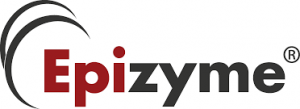
Epizyme Inc (NASDAQ:EPZM)
On June 19, 2016, Epizyme Inc (NASDAQ:EPZM) presented a study update from its ongoing phase II trial in its lead oncology candidate, Tazemetostat.
The Science
Tazemetostat is an oral administration oncology candidate that is part of a family of drugs called small molecule EZH2 inhibitors. The science behind this one seems a little counterintuitive at first glance, but stick with us. EZH2 is involved in cell reproduction and proliferation. At its core, it helps cells to divide. It’s also a transcription suppressor in many cases, however. This means it turns off the genes associated with transcription, which is the core process that underlies cell reproduction. All this sounds good, right? Well, not exactly. It doesn’t act directly on cancer cells, so the benefit associated with what might otherwise be a suppressing of cancer cell reproduction doesn’t come from EZH2 expression. Instead, an overexpression of EZH2 leads to a suppressing of the genes that would normally, in turn, suppress cancer cell reproduction. This suppression leads to what is essentially uninhibited reproduction of solid tumor cells. This is where Tazemetostat comes in. The drug inhibits EZH2, which in turn, stops it from having the suppressive impact on the genes that are normally responsible for tumor cell suppression. This leaves the latter free to suppress tumor cells (and in turn, inhibit proliferation). Or at least, that’s the theory.
The Data
So far there has been relatively little data to support this hypothesis – that is, directly related to Tazemetostat as opposed to the EZH2 inhibition concept – aside from a bit of preclinical study and a safety and proof of concept phase I. The concept itself, however, is pretty well supported by outside investigation, so the Epizyme trials are far from a complete stab in the dark. The latest data detailed study enrollment, safety and a look at clinical activity in the patient populations that have surpassed what is called their futility hurdle. Futility hurdle here just relates to some predetermined impact criteria. In this instance, this criterion is defined by seeing at least one objective response in the first ten patients enrolled, across two diffuse large B-cell lymphoma (DLBCL) arms.
So essentially, we’re looking for a confirmation of the meeting of this futility hurdle (we’ve already had some indication it’s been met) and, beyond that, a suggestion that there is some clinical impact on the progression of the DLBCL solid tumors in patients.
How did the data perform against these expectations? Well, across four separate patient groups, Tazemetostat showed a response in each group. Of 47 patients studied, the drug translated to a partial response in nine, a complete response in four and a stabilization (just meaning the cancer didn’t progress) in thirteen. This is a decent outcome, but not perfect for Epizyme. Yes, a complete and a partial response in any number of patients is good. but the company would have been hoping for a slightly higher response rate. That said, the data warrants a continuation, and from a hurdle perspective, we can consider this one cleared – barely, but cleared.
The Market
It’s still early days, and there’s a good while to go (likely not before the end of the decade) until we can start thinking about a potential commercialization strategy for Tazemetostat. Having said this, what’s the size of the target market when the time comes? DLBCL is the most common form of Non Hodgkin’s lymphoma, accounting for between 30-40% of all NHL cases. Approximately 5000 patients receive a DLBCL diagnosis every year in the US. The cost for NHL drugs (based on approvals across the last half decade) come in at anywhere between $10,000 to $30,000 per month, which gives a $120,000 to $360,000 annual cost. The potential for multi billion dollar revenues from a drug that promises to halt DLBCL tumor progression is clear. Epizyme would only need to pick up 20% penetration in the new diagnosis population in the US, and charge at the very low end of the average cost, to generate $1.2 billion annually from Tazemetostat.
Trading Strategy and Valuation
The market currently values Epizyme at a little over $657 million. The company has more than $312 million cash on hand (at March 31, 2016) which should easily fund its ongoing trial through to the end of 2018 and likely beyond. The data did little to impact the Epizyme’s market cap based on the fact that it was mixed in its inference. That is, the efficacy readout offered up some bullish sentiment, but the relatively low response rate tempered any potential gains.
Going forward, look out for an announcement that relates to a potential fifth trial arm. If Epizyme announces the initiation of said arm, there’s a bit of upside to be had. That aside, however, chances are the company won’t move too much ahead of topline.
This Week in FDA vs Biotech Part II, Teva’s Vantrela Gets Abuse-Deterrent Label

On June 7, not only was Vantrela approval recommended by a vote of 14 to 3, but the FDA panel also voted 14 to 3 that if approved, VANTRELA ER should be labeled as abuse-deterrent by the oral route.
In that research piece we said the following:
The problem is, the briefing document available on the FDA website does not directly state FDA’s opinion on the abuse deterrence of Vantrela when taken orally. There are some indications in the data that manipulation followed by oral administration is not as effective at deterring abuse as dissolving the drug in a tincture, isolating and injecting, but the data does show some level of effectiveness with manipulated oral administration. So whether the statement that Vantrela ER “does not have abuse-resistant properties when taken orally, according to a preliminary review by the U.S. Food and Drug Administration” in the words of Reuters is speculation, word of mouth or something else is unclear.
Not to toot our own horns or anything like that, especially because we did speculate that the abuse deterrent label would not be recommended for the oral route as we assumed that the Reuters report was based on something that we just couldn’t find, this whole scenario does show the importance of examining primary sources rather than relying on ambiguous reports even from a respected outfit like Reuters. As it turns out, Teva got the label recommendation, and the report turned out to be slightly misleading, though of course not purposely so. Reuters was probably basing its report on someone at the FDA, possibly one of the 3 people that voted against the abuse-deterrent oral label, but the fact that those concerns were not raised in any official document we could find did indicate that the opinion was a minority and should probably have been reported as such.
As a refresher to the science, while Teva is tight-lipped as to the proprietary nature of its abuse deterrence formula, we speculated based on redacted experimental data that Vantrela works by defending the active opioid ingredient in layers of both polar and nonpolar molecules that together would help deter dissolution in both polar and nonpolar solvents. Further, even if a patient were able to dissolve the protective layer away prior to oral ingestion, full extraction of the active ingredient could theoretically require temperatures so high that extracting it would lead to the warping or possibly even destruction of the active pain killing ingredient, our so-called self-destruct mechanism if a potential abuser tries to manipulate the tablets.
Taken together, if our analysis is correct, Vantrela ER should be extremely difficult to manipulate effectively, and the FDA panel has agreed. Teva’s opinion is that the label for Vantrela will say that the abuse-deterrent properties will reduce but not totally prevent successful manipulation. This is good enough. There is most likely a theoretical way to dose-dump Vantrela, but it would probably cost too much to do and require too much chemistry skills for your average abuser to successfully execute.
Since the June 7 panel recommendation, Teva shares are down 4.5%. This down move is nothing but beta market conditions bringing down large caps generally over the past 2 weeks. As we said last week, if approved, Vantrela could add about 3.6% to Teva’s top line. Now that it will probably gain both approval and the coveted abuse deterrent label on oral, intravenous, and intranasal administration, combined with Teva’s experienced and extensive marketing machine, those numbers now look quite probable.
Teva’s financial situation is quite healthy. As of its last annual report, the generics giant only has about $8.4 billion in debt with a market cap of $47.3 billion. That puts its leverage at only 18%, which is very conservative by industry standards.
A 3.6% bump in revenues is not going to push the stock into the stratosphere or anything like that, but it does increase the likelihood that Teva will outperform its peers or at least grow nicely over the next few years. If and when abuse deterrent opioids gain mainstream market acceptence, and that could happen within the decade, then Vantrela could prove even more helpful to Teva’s bottom line as time progresses.
The 4.5% decline in Teva’s stock following this positive FDA panel recommendation should be seen as a buying opportunity. Teva is a long term hold that you can keep in your portfolio without worrying about it for at least the next 5 years.





